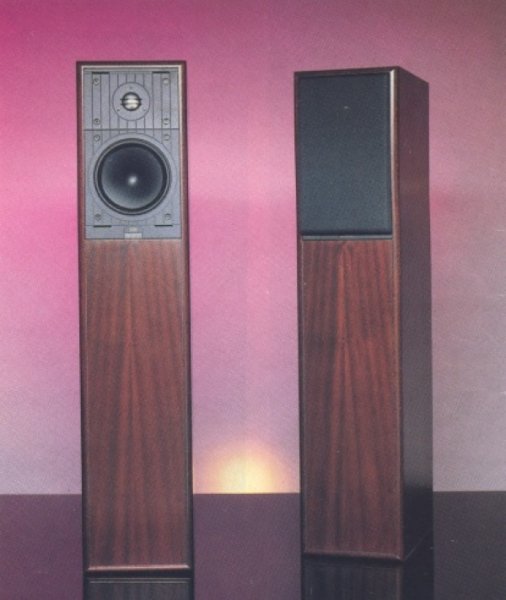This is the title of a fascinating article in the current September 2010 Issue 205 of The Absolute Sound. In it, eight current reviewers of TAS, including founder Harry Pearson, were asked to name the dozen speakers which they thought to be the 12 most significant loudspeakers of all time.
#9 KLH Model Nine electrostatic
Here, I have to admit that I've never once heard these speakers. In the article, they are billed as the American answer to the British Quad 57. That may be. From all that has been written about them, however, I think I'd find them as frustrating as the Quads are to me because they promise more than they can really deliver. Like the Quads, they could not do symphonic music justice at realistic volume levels unless doubled up (at considerable expense for the time) and even then, the fuses would blow a lot.
The trend represented here is surely full-range line source electrostatics. It was probably the first commercial line-source speaker of any kind since it pre-dated the Magneplanars. Later models, such as the Acoustat, Sound Lab, Innersound, and the current Sanders models go way beyond the limitations talked about by those who have heard the KLH Model 9.
I do currently own a pair of restored KLH Model 12 speakers, however, which KLH said at the time were their closest approach to the Model 9 in a dynamic speaker, and which the manufacturer said was a much more practical speaker. The KLH Model 12 is a legitimate rival for the AR-3a, in my opinion, although I prefer the AR on most days. The KLH is more transparent than the AR and probably plays deeper and louder yet in the bass. But the tonal balance, despite seemingly more sophisticated crossover balance controls, is just a bit too incisive in the upper mids/lower highs and the treble from the doughnut tweeter is beamy. The doughnut-shaped tweeter looks like a forerunner of the one Kloss later used in the Advent, but in the Advent the treble definitely did not beam so.
Hi Tom,
I'm on a search for on-line mentions of the KLH Nine. That's an interesting list, and I was glad to see the KLH Nine there, but the writer might have benefited from ever hearing the KLH Nine, or even just knowing anything about it.
Most importantly, they're not a line array -- for those who also don't know, each panel has a single 4" square tweeter at the seated listener's ear height crossed over at 800 Hz to ten square feet of woofers. This means that the back wave in teh midrange and treble is of minimal consequence, tending to beam and intersect itself in first reflection and thus cause comb filtering artifacts as would happen with a large area, full range dipole like pretty much all the rest. The dipole bass is
flat to 40 Hz when the woofers are made right, so there's no lack of depth. (Not sure why, but we are encountering woofers typically with overly tensioned diaphragms that prevent deep bass, easily rectified.)
They go pretty loud, but sure, not the same as live symphonic in the first few rows, but you'll never miss it at home. They're 16 Ohm speakers, and will go to full volume with about 50W RMS/ch, as long as there's a 16 ohm tap on the amp. They were meant to be paired with the Marantz EL34 gear of their day with about 35 - 40 W/ch. Otherwise, they'll need the equivalent voltage that they'd have got in that case, which would be 28V, equivalent to a solid state (or other) amp that can put 100W into 8 Ohms. More voltage than that, and there's a risk of arcing the woofers, at least in the original incarnation. (We've got a solution that will allow enough power to ionize the air in the gap without arcing, which will both increase sensitivity and allow higher maximum SPL, but it won't be ready for a while.)
Most importantly, they sound absolutely lovely, and they aren't as hard to place as any of the other electrostatics (except our own, because so far they are all monopoles). Anyone who
has heard or owned KLH Nines will confirm both claims.
At JansZen, we've begun taking old stock of these speakers, improving them functionally in few ways, replacing the original, usually stained, cheesy cotton grill cloth with linen, and giving the frames a furniture grade finish.
I hope everyone who's a fan of the originals checks out
our web site for more info.


